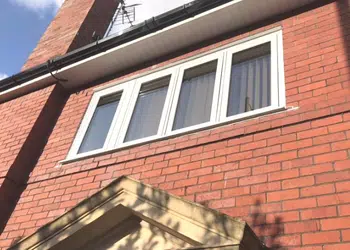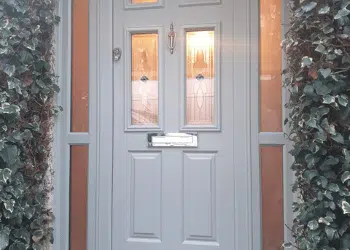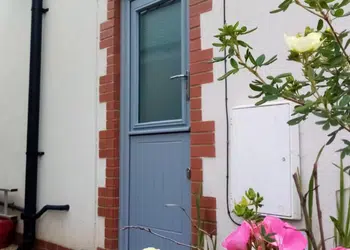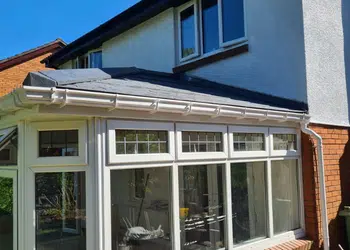Draughty windows can be an annoying and frustrating problem for many homeowners in South Wales, especially during the colder months of the year. They can make your home feel uncomfortable and cause your energy bills to skyrocket due to the cold air seeping in. However, understanding the root causes of the problem can help you fix it more efficiently. In this blog post, we’ll discuss the reasons why your windows may be draughty and offer several suggestions for improvement to keep your home cosy and energy-efficient.

Problems with Modern Windows
Modern windows should not be draughty. You may feel cold coming off the glass, but double glazing mitigates that. Condensation can also happen with modern windows and that is caused by conditions in the home. Read more about window condensation.
Old or Badly Fitted Windows
One of the most common reasons for draughty windows is their age and condition. Over time, windows can become worn out and deteriorate, causing gaps between the frame and the sash. This can lead to the gaps that allow draughts into your home. If this is the case, one solution is to replace your old windows with new, energy-efficient windows. Not only will modern windows eliminate any draughts, but it will also improve your home’s overall energy efficiency.

Get a Free Quote
We understand that not everyone can have new windows. You may not own your home, finances, or lack of job security may mean you have to wait. If you live in a listed building or your home is in a conservation area, you may be restricted. If the latter is the case, take a look at secondary windows.
Whatever your reason, you can be assured that booking a quote does not put you under any obligation. We’ll give a price, and you’ll know what to aim for. No pressure from us – guaranteed. Contact us to get started.
Poorly Installed Windows
Another common reason for draughty windows is poor installation of the existing window frames, which can cause gaps between the window frame and the wall. This is because the window is not properly sealed, and air can easily enter your home. If your windows were not installed by a professional, it may be worth having them assessed for any installation issues.

Window Seals
If your windows are relatively new, but you still find draughts penetrating your home, then faulty window seals may be to blame. Window seals are responsible for keeping air from seeping through the gaps between the frame and the sash. However, after a few years, they may begin to wear and become less effective. You can easily replace faulty seals with new ones or apply weatherstripping tape to close the gaps and keep draughts at bay.
Single-Pane Windows
Single-pane windows are those made up of a single glass sheet. As a result, they do not insulate as well as double or triple-pane windows, which have air gaps between the glass sheets. Single-pane windows can be a significant source of heat loss and draughts, making them less energy-efficient. Replacing your single-pane windows with double or triple-pane ones can offer better insulation and reduce your heating bills in the long run.
DIY Draught Solutions
If you’re looking for a low-budget way of draught proofing your home and reducing your energy bills, there are several DIY solutions available. You can use self-adhesive weatherstripping tape, draught proofing strips or rope caulk to seal the gaps in your windows. Curtains and blinds offer great benefits too. Not only do they make your home look great but can also help you to keep warm and save money on heating costs.

3 best rated curtains and blinds suppliers in Cardiff
For a good selection of ready made curtains and blinds at lower prices, check out Dunelms. Roller blinds are easy to cut down. Reverse roll them so they stay closer to the window. That way you’ll have less gaps for draughts and reduced light coming through.
Consider Your Doors Too
You might also use draught excluders under your doors or make your own with a rolled-up towel. These can limit the amount of cold air that enters your home and help you save money on heating. Remember to do this for internal doors if a draught from another area affects a heated room.
Use a letter box draught excluder, as letter boxes can let in a lot of cold air especially if something stops them from closing properly.
If your postman is in the habit of leaving your letterbox open, it may be worth installing a box on the back of the door.
Read more about Saving Energy This Winter
Get the kids involved and make draught excluders from scraps.
Block Window Trickle Vents
Trickle vents are small openings in windows that allow for ventilation. While they can be useful during warmer months, they can also contribute to draughts and heat loss during colder months. You may consider closing them or blocking your trickle vents with draft-proof covers or using magnetic strips to seal them when not in use.
Fit Secondary Glazing
Secondary glazing is an excellent solution for those who cannot replace their windows or simply want to enhance their current window’s insulation properties. It involves adding a second layer of glass or clear acrylic inside your existing window. This creates an air gap that acts as an additional barrier against drafts, noise, and heat loss, thus improving your home’s energy efficiency. Secondary glazing is particularly beneficial for listed buildings or conservation areas, where altering the original windows is often not permitted. It’s a cost-effective measure that doesn’t alter the external appearance of the property, yet provides comparable benefits to double glazing.

DIY Secondary Glazing
DIY secondary glazing has become a popular choice for many homeowners seeking an affordable and non-invasive approach to enhance their home’s thermal efficiency. Much like professionally installed secondary glazing, the DIY version also involves adding a secondary layer of material to your existing windows. This can be achieved using various products available on the market, including heat-shrink film, magnetic tape, or even a secondary glazing kit. The application process is relatively straightforward, making it a feasible option even for those with minimal DIY experience. Still, it’s worth mentioning that while DIY secondary glazing can provide substantial improvements, it does not offer the same level of draught proofing and durability as professional installations.
Professional Secondary Glazing
The main difference between DIY secondary glazing and the professional solutions that we install is in the permanence. You will probably remove the DIY versions in the summer because they are not attractive and may be more difficult to use when you want to open your main windows.
At Heath Windows and Doors, our professional secondary glazing solutions offer a perfect blend of aesthetics, durability, and energy efficiency. By installing a secondary layer of high-quality, clear glass to your existing windows, we enhance your home’s thermal insulation and reduce draughts without compromising the original architecture. Our team of professionals works meticulously to ensure the secondary glazing blends seamlessly with your windows, offering you year-round draught proof comfort without the need for removal during warmer months. Most significantly, our professional secondary glazing is built to endure, providing you with a long-term solution for enhancing your home’s energy efficiency and reducing heating bills.

Conclusions
Draughty windows can be an uncomfortable and costly problem for homeowners in South Wales. However, fixing the issue is simpler than you might think. By understanding the root causes and examining the condition of your windows, you can identify the appropriate solution for eliminating the draughts and improving your home’s energy efficiency. Whether you replace your old windows with new, energy-efficient ones, fix faulty seals and poor installation or apply DIY solutions, you have many options available to make your home more comfortable and cosy.


























